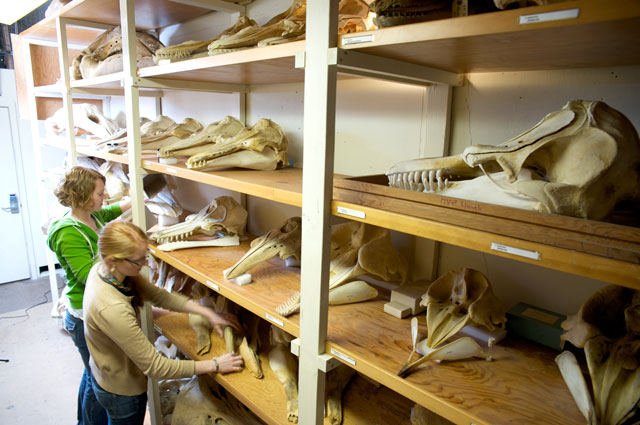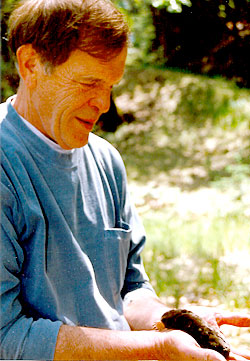
On Friday, Feb. 11, at 2:30 p.m., the Department of Biological Sciences pays tribute to the late HSU professor with a dedication ceremony in the Atrium of Science B to rename the mammal collection of the HSU Vertebrate Museum as the Timothy E. Lawlor Mammal Collection.
James Patton, a well-known mammalogist from U.C. Berkeley’s Museum of Vertebrate Zoology, will be present at the ceremony and will speak about Lawlor’s legacy, as will Steven Smith (Interim Dean, HSU College of Natural Resources and Sciences) and Thor Holmes (Vertebrate Museum Collections Manager), both former students of Lawlor’s. A reception will follow. Patton will also be giving the Biological Sciences seminar at 4:00 p.m., in Founders Hall 118. He will speak about the Grinnell Project, an effort to resurvey all of the sites in California previously visited by the naturalist Joseph Grinnell. His talk is titled: “A legacy of Joseph Grinnell: predicting the future from the record of the past”.

Lawlor came to Humboldt State College in 1969 with graduate degrees from the University of Kansas and the University of Michigan. As a faculty member in the Department of Biological Sciences for more than 30 years, he taught courses in mammalogy, advanced mammalogy, evolution, and biogeography. His courses were famously challenging and impacted the future of many students. For these efforts, he was awarded the Outstanding Professor Award by HSU (1989) and, later, the Joseph Grinnell Award for Excellence in Education by the American Society of Mammalogists (2001). Lawlor passed away in April.
When Lawlor arrived at Humboldt State, he found a vertebrate collection that had 739 catalogued specimens. Under his 32-year stewardship, the mammal collection grew more than ten-fold. Lawlor contributed 1,360 specimens to the collection himself, but, significantly, well over 5,000 specimens were contributed by the many students who accompanied him on collecting trips or who worked in the collection under his supervision. This exposure to museum science provided the foundation and inspiration for many young biologists to pursue the profession. His legacy lives through the thousands of students he influenced through his classes, his mentorship, and his friendship.
Read more: Check out the feature story on the Vertebrate Museum in the upcoming issue of Humboldt magazine, set to arrive in mailboxes the third week of March.